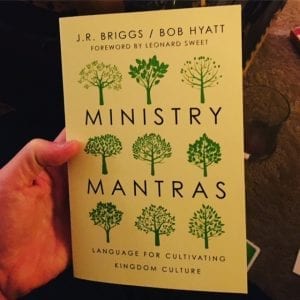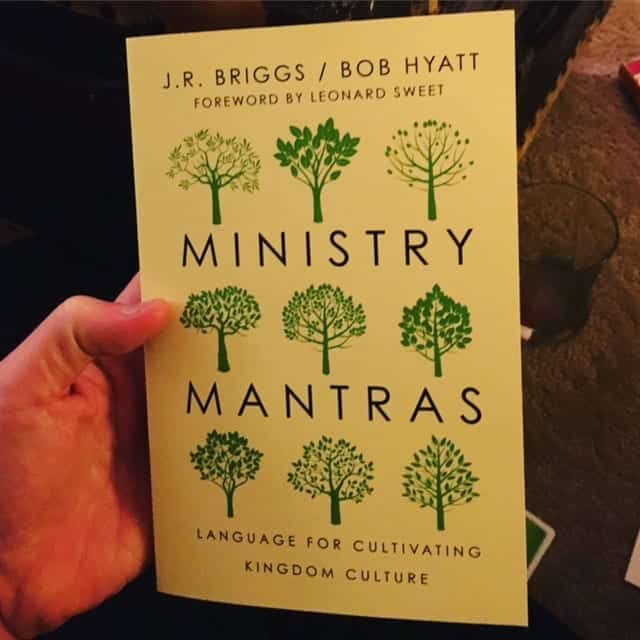
My big brother, J.R., co-wrote an important book called Ministry Mantras; Language for Cultivating Kingdom Culture. I know I’m a bit biased, but this is a great book and is really going to impact leadership culture within teams and churches.
Here is a short interview with him about this recently-released book…
How did the concept of the Ministry Mantras come about and why did you and your co-author write it?
My friend Bob Hyatt, a pastor in Portland, OR, approached me with this idea of writing a book together on mantras. Both of us are fully convinced of the power of language, especially within leadership contexts, and we have seen evidence of those who cast vision well using language effectively, particularly in our own church contexts. But this isn’t just in ministry. Mantras exist in all of life. Benjamin Franklin, Yoda and presidential candidates have used mantras to get their point across in powerful and effective ways.
In our churches Bob and I regularly use short, hooky, memorable sayings to communicate vision and what we’re about. We regularly use these mantras to communicate vision, drive our meetings and lace our conversations. We thought it would be important to share those as both a resource to the larger Church and also help people grasp the power of language in their leadership uniquely in their contexts.
How do you hope it affects readers?
Quite simply we’re hoping people read the book and become even more convinced that language is important in creating culture. We also hope that people will have a desire to want to grow in developing and communicating these truths in frequently used mantras in their church.
What we don’t want, however, is for people to simply take all of our mantras and use them undiscerningly. Context is crucial for mantras to be effective tools in the tool belt of a leader. Certainly, we hope that several mantras will be helpful enough that leaders would begin to use them in their context, when appropriate. But, more importantly, we hope people will allow the book to help generate new mantras that would work in their context. We want the reading of the book to be a space for generating new ideas and creative language to reinforce what is important in local contexts.
The book is a pretty nontraditional book in its arrangement. How did you come to write a book like that?
Yes, it is. Instead of a traditional book of, say, twelve chapters of about 10-12 pages each, this book contains 75 mini-chapters of 1-2 pages in length. Each of the 75 chapters focuses on one specific mantra. The mantras are broken into several topical categories such as leadership, vision, motivation, ministry, community and conflict, just to name a few.
Half of the mantras are used in my local church (The Renew Community in Lansdale, PA) and half come from Bob’s church (Evergreen Community in Portland, OR). These were not mantras we made up and scribbled on a whiteboard during a brainstorming session one afternoon; all of these mantras have been – and continue to be – expressed, embraced and embodied within two local congregations. In fact, people within our churches who have read the book admit to smiling and nodding, as they are familiar with many of the mantras listed in it. One person in my church even told us that he has used several of these mantras regularly over the past few years in order to describe what our church is like to others. We believe that the praxis of the book gives it more weight.
It’s like 75 pearls on a necklace. Each can be read separately and yet the string of the cultivation of vision and values through language holds all the pearls together.
What is your favorite mantra in the book?
Well, it depends upon the context where and how it is used. That’s what makes the book so fun. So much of effectiveness of mantras is knowing when to use them, with whom and in what setting. But if I had to pick one it would be “leadership is purposefully choosing whom you will disappoint.”
Go grab Ministry Mantras!

